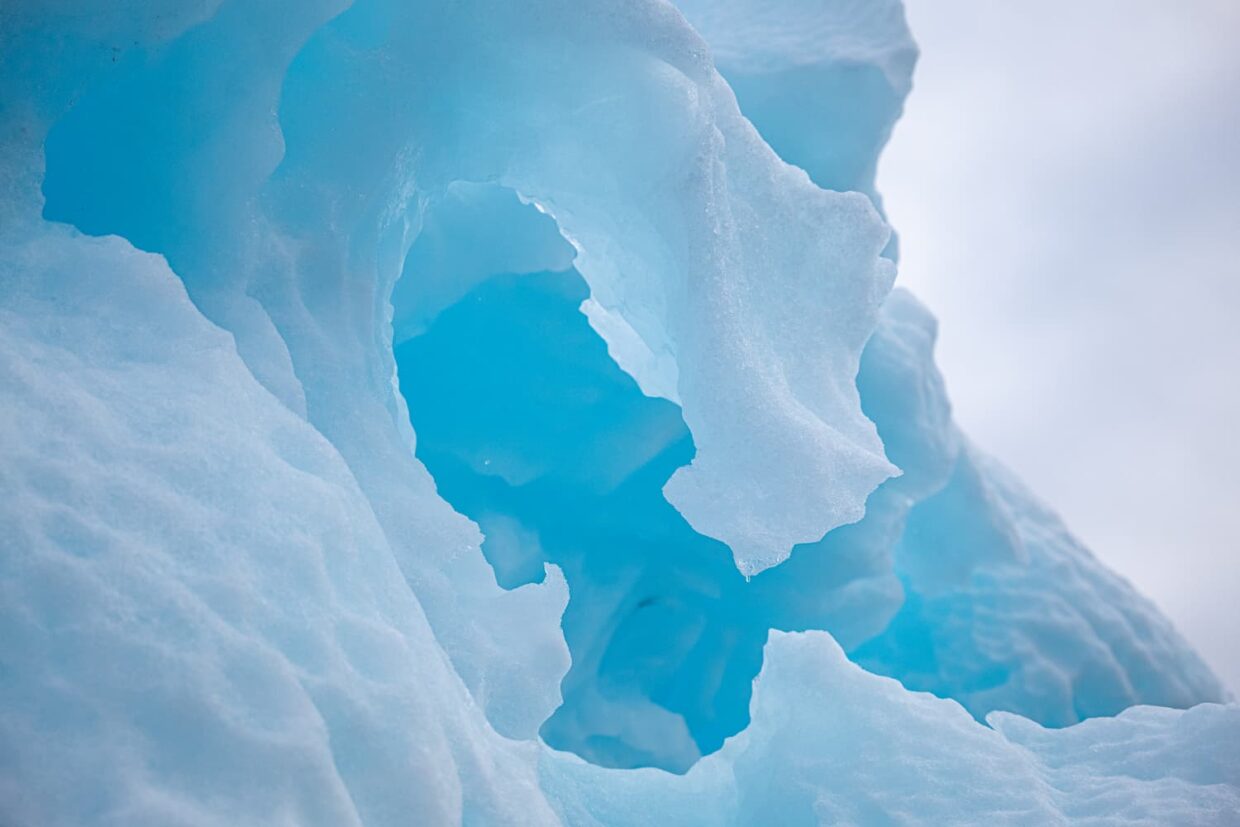Arctic and Antarctic: what are the differences?
Located 20,000 km apart and at geographic antipodes, the Arctic and Antarctic are quite similar at first glance. So how can we avoid confusing them? At the North Pole, the Arctic is mostly an ocean covered by pack ice. At the South Pole, Antarctica is essentially a large continent covered by an ice cap. Although the climate is particularly hostile in these polar regions, biodiversity can be abundant. Discover more about the particularities of each of these two poles.
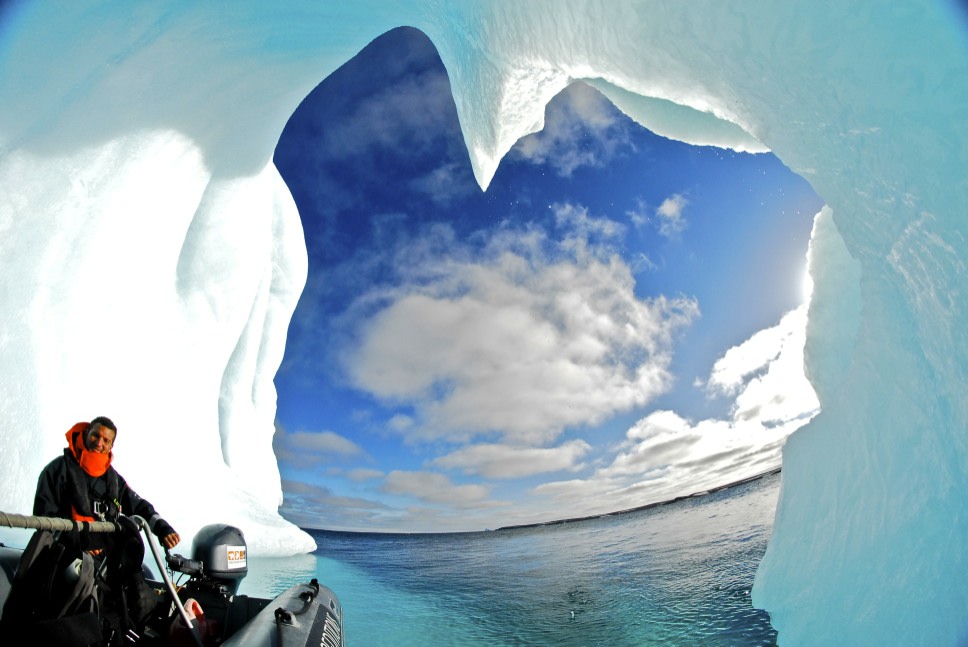
Why are they called the Arctic Ocean and the Antarctic continent?
The Arctic and Antarctic are two regions located at the poles, made up of ice caps, glaciers and pack ice. How can we tell them apart? The Arctic is mostly an ocean surrounded by land, while Antarctica is mostly a continent surrounded by the Southern Ocean.
Arctic: an ocean surrounded by land
GGeographically, the Arctic is made up of a group of territories located within an imaginary boundary, known as the Arctic Circle. At the heart of this region lies an ocean that freezes on the surface in winter and partially thaws in summer.
Most of the Arctic is made up of pack ice floating on an ocean with an average surface area of around 10 million square kilometers. Seawater freezes on the surface in large slabs which, driven by the wind, break up and collide. This salty ice gradually softens and melts over time. The Arctic also has glaciers and ice sheets, but these are mainly located on the surrounding islands, the largest of which is Greenland.
The Arctic Ocean is very deep, with trenches reaching 5,000 m, and underwater mountain ranges. It’s a landlocked ocean that could be compared to a “cold Mediterranean”. It’s the only polar ocean on the planet where permanent night and permanent day each last five months of the year.
Under the influence of sea currents and winds, the pack ice moves. Its speed can vary between 5 and 20 km per day.

How does pack ice form?
1- Ice soup: when the water temperature falls below -1.8°C, a kind of ice soup is transformed into ice crystals.
2- Frazil: under the action of turbulence a few meters below the surface, crystals 2 micrometers in diameter accumulate, interlock and rise, forming a thin layer of ice.
3- Ice pancakes: as frazil accumulates, it forms small plates. When they collide, they form small pancakes.
4- Young ice: these 10-30 cm blocks of ice form the pack ice.
5- First-year ice: this ice varies in thickness from 30 cm to 1 m.
6- Pack ice: after several years, this multi-year ice can reach 2 to 3 m in thickness. When the ice reaches this thickness, the seawater is isolated from the atmosphere, preventing the formation of new crystals. Its maximum thickness is attained.
A distinction must be made between pack ice, which is floating and drifting and fast ice which refers to ice sheets attached to land.
Antarctica: an isolated continent in the middle of the ocean in the southern hemisphere.
Made up of 90% ice, Antarctica is mainly composed of an ice cap — an immense mass of continental ice covering almost the entire continent. Formed by snowfall, the ice cap has an average thickness of 1,600 m. Covering an area of 14 million square kilometers, this zone includes glaciers moving from the center of the continent towards the coasts, where they break off to form icebergs. Floating ice shelves, such as the Ross Ice Shelf and Larsen Ice Shelf, are characteristic of Antarctica.
How is an ice cap formed?
An ice cap forms when the amount of snow received in a year is greater than the amount that flows off. The snow generally accumulates at the summit, transforming the oldest layers into ice. By gravitational pull, the glacier gradually flows towards the sea. In bad weather, and due to the different tensions within the ice, blocks of ice break away from the glacier or ice shelf, forming icebergs. This process of iceberg formation is known as “calving”. Icebergs are thus made of freshwater and drift with the currents, breaking up and melting over time.
NB: 80 to 90% of the iceberg’s volume is submerged. For example, an iceberg 35 to 40 m long will have a submerged section of around 300 m.
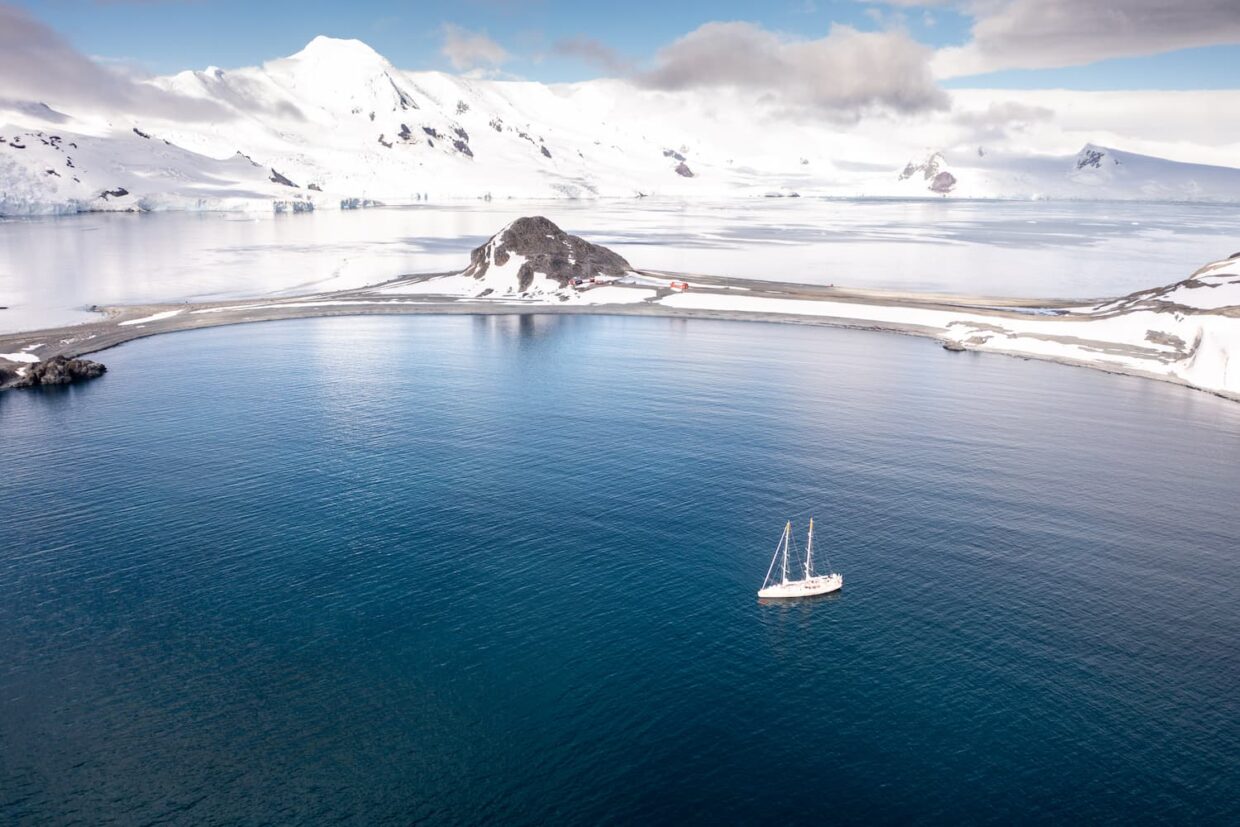
What is albedo?
Albedo is the proportion of solar radiation reflected back into the atmosphere. At the poles, thanks to the abundance of ice, the albedo is higher than elsewhere on the planet: a white surface reflects up to 90% of solar radiation. Albedo varies little in Antarctica where the ice can be as thick as 4,000 meters, for example at the South Pole. In contrast, albedo varies greatly in the Arctic where the pack ice exposes vast expanses of dark ocean as it melts.
What is the difference between the Arctic and Antarctic?
Differences between the Arctic and Antarctic are many and significant: not only in terms of ice type, as we’ve just seen, but also considering other criteria such as ecosystem, geography and biodiversity.
Distinct ecosystems
North Pole – Arctic:
- Climatic conditions are relatively milder than in Antarctica: average winter temperatures are around -40°C in the Arctic and -60°C in Antarctica.
- The human presence is significant (7 million inhabitants), with indigenous populations such as the Inuit (in Greenland, Lapland, Alaska). Vegetation consists of Arctic tundra with mosses, lichens and a few shrubs.
- Marine life is rich in species such as seals, walruses, polar bears, and a wide variety of fish and marine mammals. Nevertheless, it has been little studied and there is still a wealth of biodiversity to be discovered at the base of the ecosystem.
South Pole – Antarctica:
- Climatic conditions are much more extreme than at the North Pole, with very low temperatures: a world record measured at -89°C in 1983. It’s the coldest continent on the planet.
- There is no permanent indigenous human population. Human presence is limited to scientists on research bases: more than 40 permanent scientific bases house around 1,000 researchers of a dozen nationalities.
- Vegetation is almost non-existent, limited to a few algae, mosses and lichens. –Marine life is as rich as in the Arctic but different: penguins, seals, whales, benthic flora and numerous seabirds.
Rich and diverse biodiversity
Biodiversity is greater in the Arctic than in the Antarctic. Large mammals include polar bears, reindeer, musk oxen and many migratory birds. However, the Arctic is a region that has been little studied. Microscopic marine biodiversity, for example, is virtually undocumented.
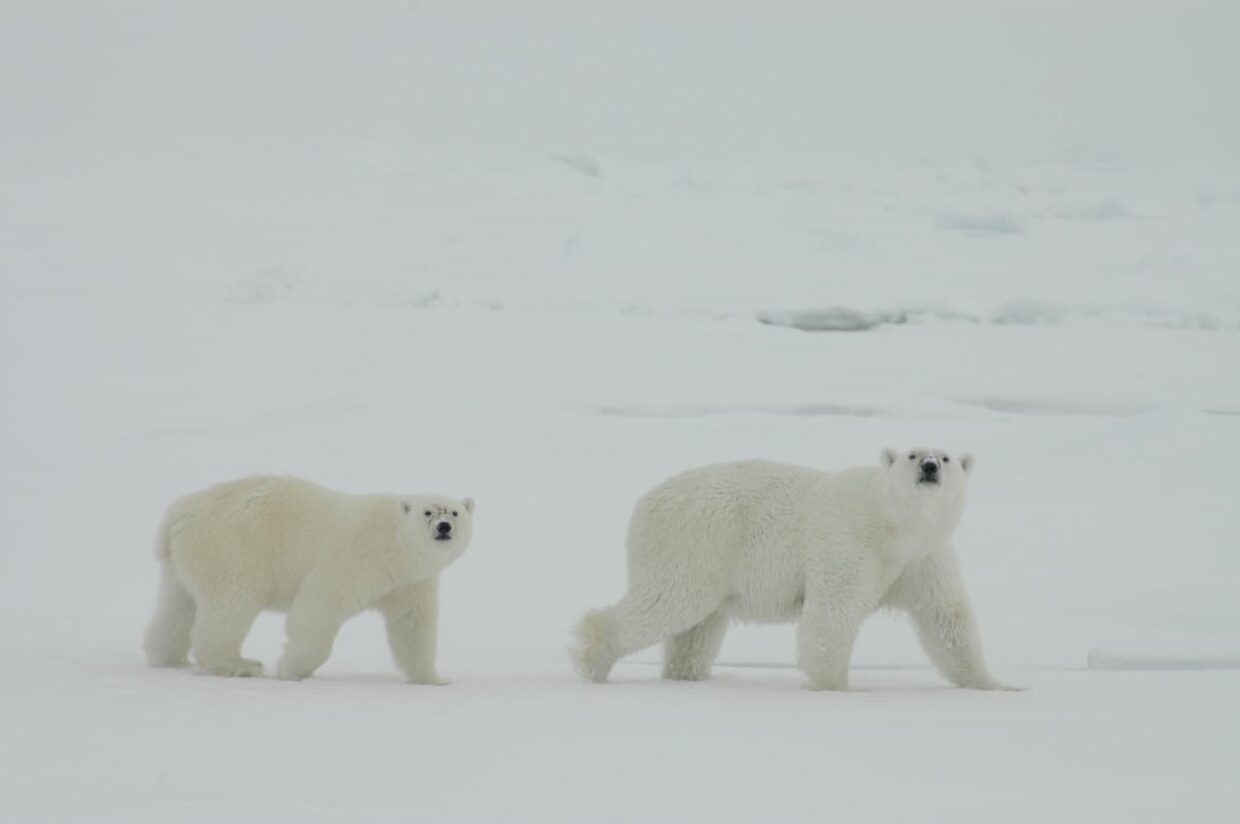
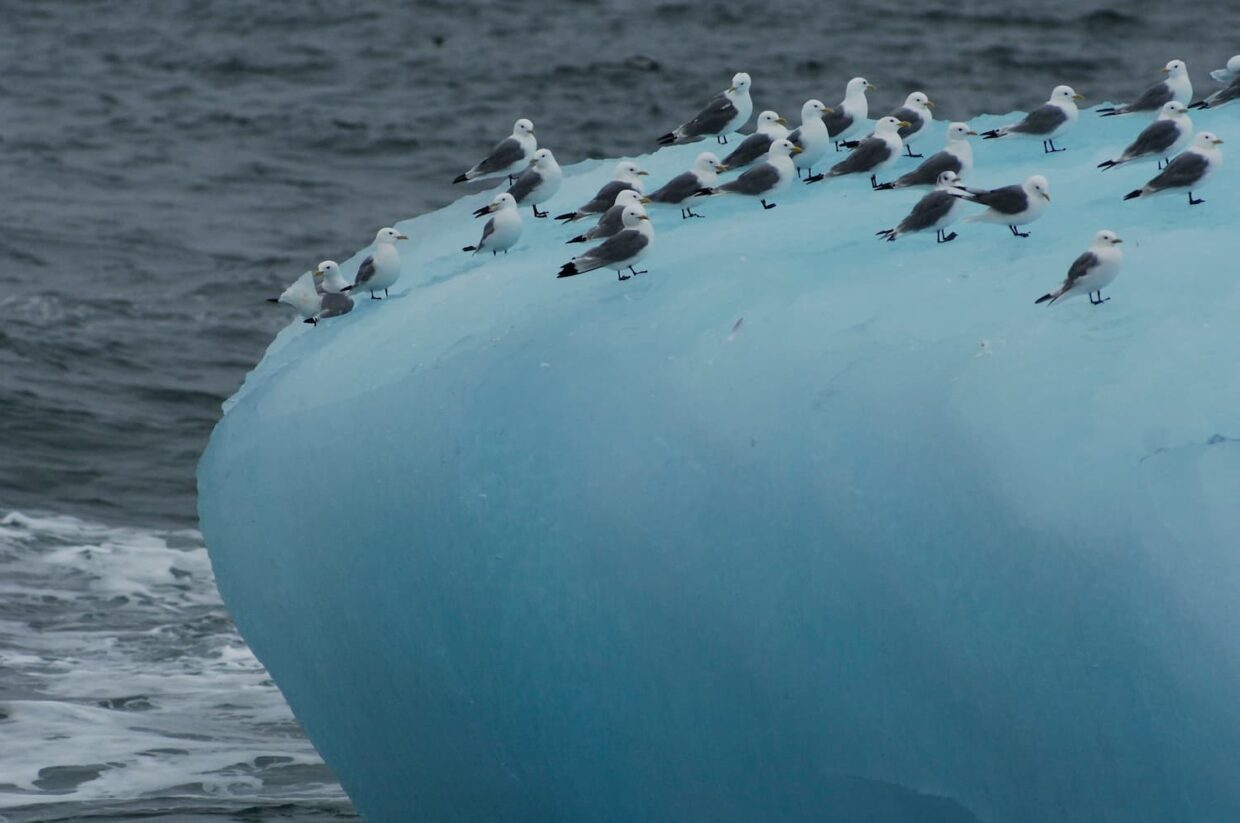
Terrestrial biodiversity is extremely limited in Antarctica due to the extreme environmental conditions. Antarctica has been isolated from other continents for a very long time. Polar bears were unable to establish colonies there because the continent was too far from other lands when the species first appeared. In contrast, marine biodiversity is relatively high in Antarctica, with species adapted to cold waters such as krill, on which depends a major part of the marine food chain.
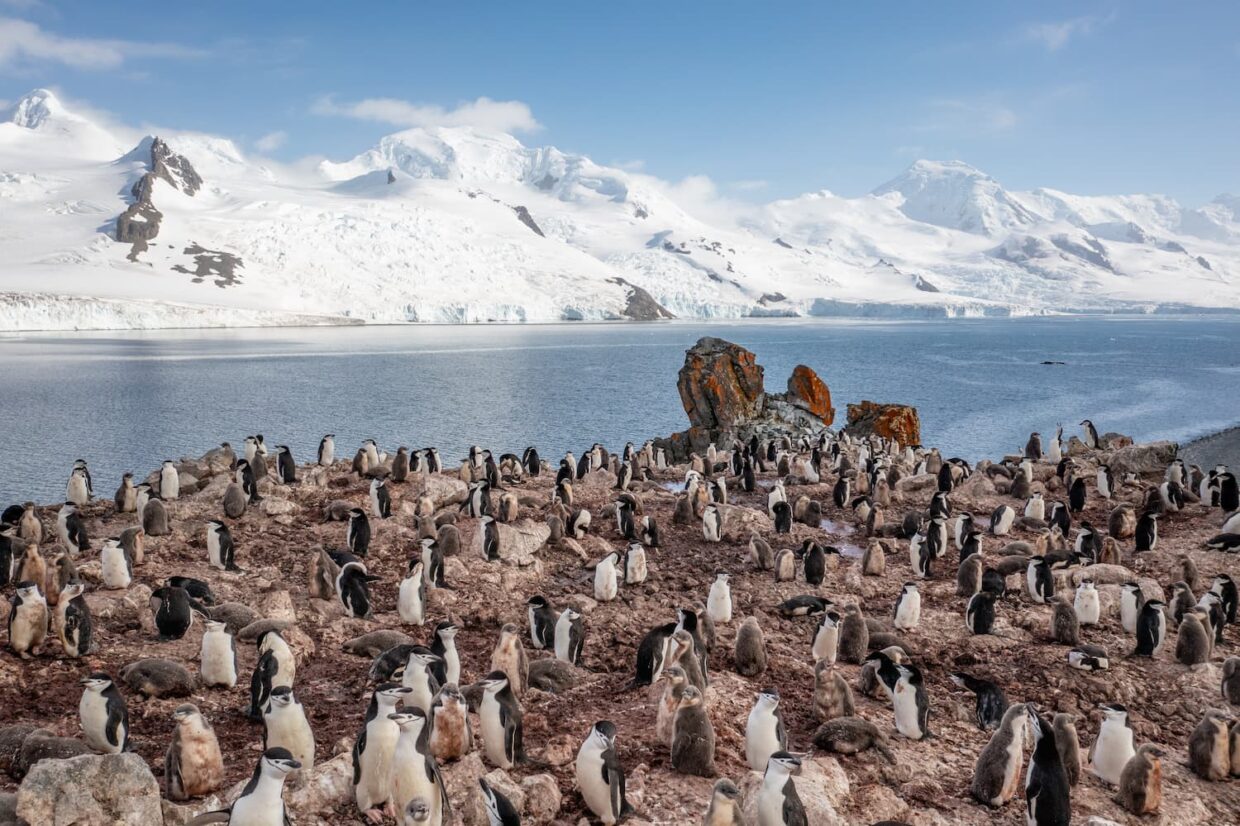
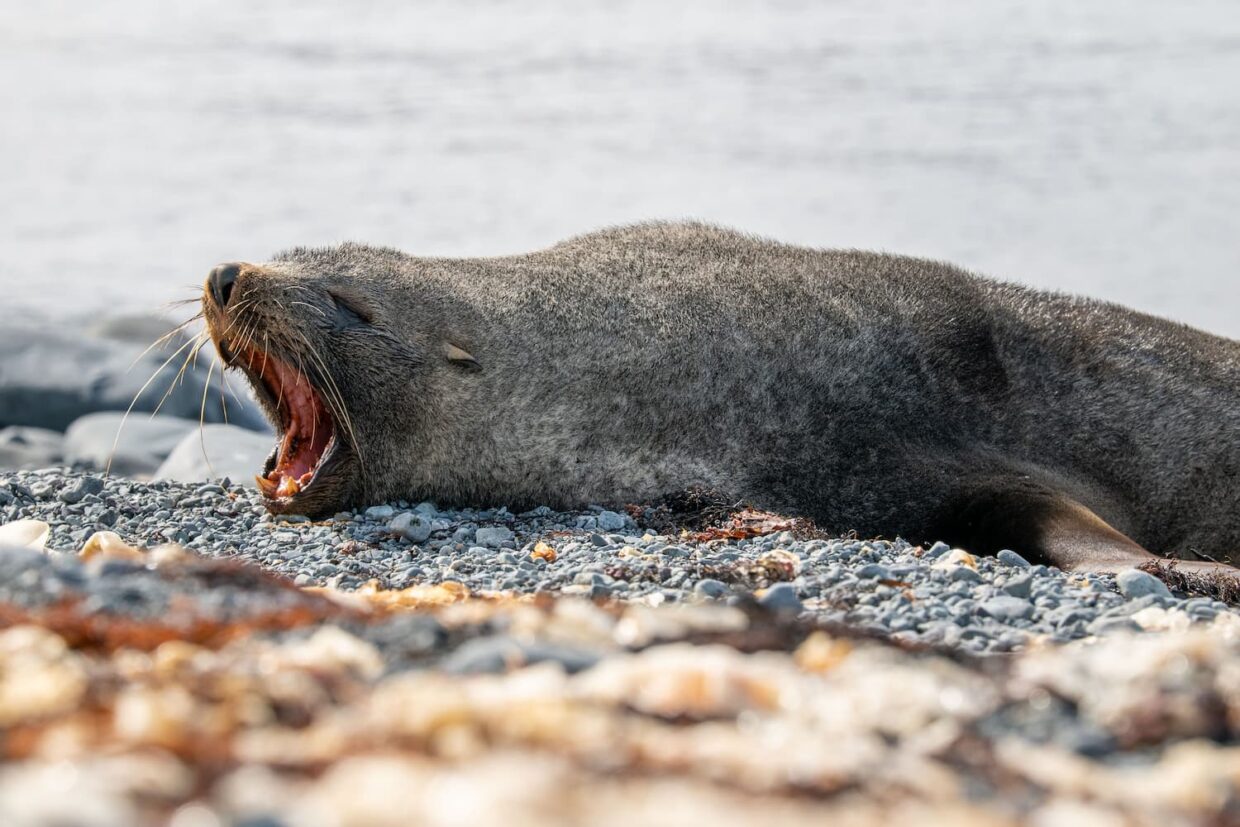
What is the Arctic Circle?
The Arctic Circle is a longitude, an imaginary line running around the Earth, marking the limit of the polar regions. Geographers designate the Arctic Circle and the Antarctic Circle. Polar circles are used as important geographical markers — the latitude at which the sun sets on the summer solstice.
The polar circles define the zones within which the phenomena of midnight sun and polar night occur at least once a year. These phenomena are due to the tilt of the Earth’s axis in relation to its orbit around the sun.
Arctic Circle
- Latitude: located at approximately 66°33′ 47″ North.
- Position : crosses the northern regions of North America, Europe and Asia.
- Climate : characterized by very cold winters and short, cool summers.
- Natural markers: (Day & night)
- midnight sun: on June 21, the sun doesn’t set, but remains visible for 24 hours.
- polar night: on December 21, the sun doesn’t rise, but remains below the horizon for 24 hours.
Antarctic Circle
- Latitude: approximately 66°33′ 47” South
- Position :surrounds the Antarctic continent.
- Climate : extremely cold, with temperatures well below zero for most of the year.
- Natural markers: (Day & night) (exactly opposite from the Arctic)
- midnight sun: on December 21, the sun doesn’t set, and remains visible for 24 hours.
- polar night: on June 21, the sun doesn’t rise, but remains below the horizon for 24 hours
Covered in white, the polar regions are unique landscapes home to a biodiversity essential to the balance of our planet. With a volume of ice 10 times greater in Antarctica than in the Arctic, climate change is having a stronger impact on the North Pole which plays a key role in regulating the planet’s climate, particularly in the northern hemisphere. The loss of summer sea ice and the reduction in spring snow is amplified by rising temperatures: humidity increases and albedo decreases. This region is warming three to four times faster than the rest of the world. Understanding how life has adapted and evolved there is fundamental to anticipating the effects of climate change further south and protecting the Arctic’s unique biodiversity.
In the history of Arctic polar research, very few studies have been carried out in the center of the ocean because scientific expeditions in this zone are logistically difficult to conduct in the middle of winter. Furthermore, research into living organisms is still at the stage of discovering endemic species and their incredible ability to withstand long winters.
As part of France’s polar strategy, and on the eve of the Decade of Action for Cryospheric Sciences (2025-2034), the Tara Ocean Foundation is currently building a scientific research vessel designed to withstand ice and drift autonomously for 500 days: Tara Polar Station. Our ambition is to carry out 10 consecutive expeditions every even-numbered year until 2046 to study the biodiversity of the Arctic Ocean, as well as the mechanisms and impact of global warming. This is the first time a research program will collect data on this extreme ecosystem throughout the seasons, on a continuous, long-term basis.
